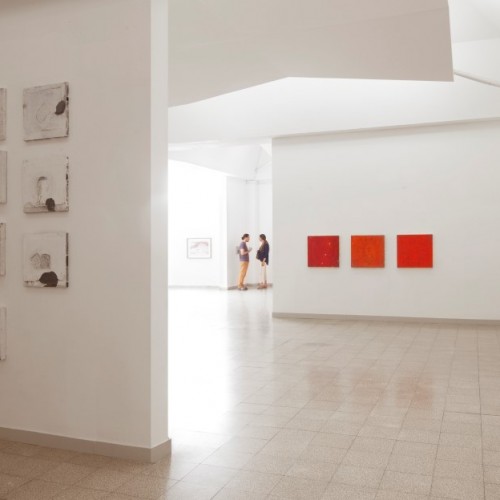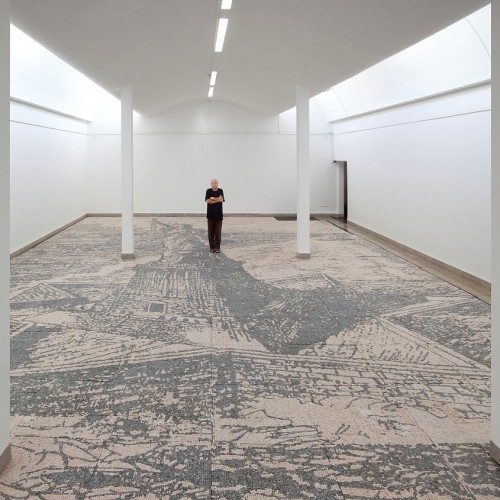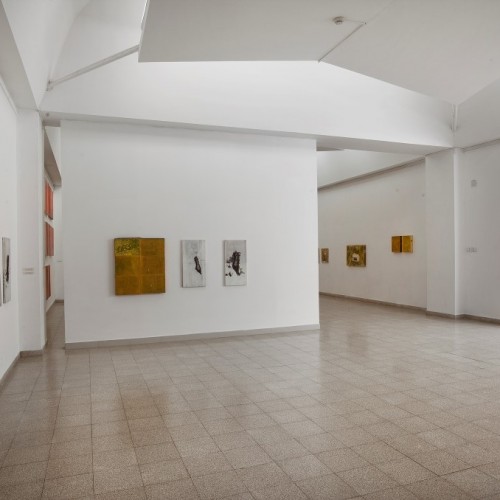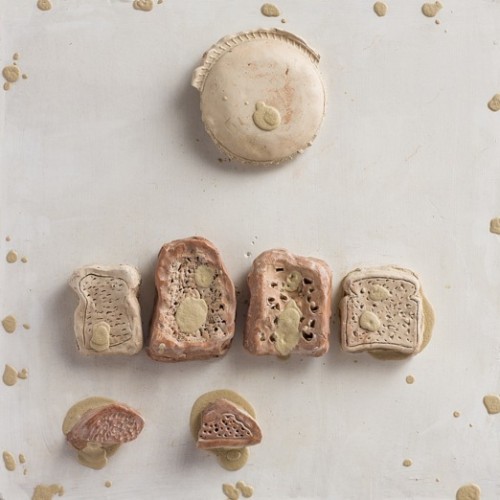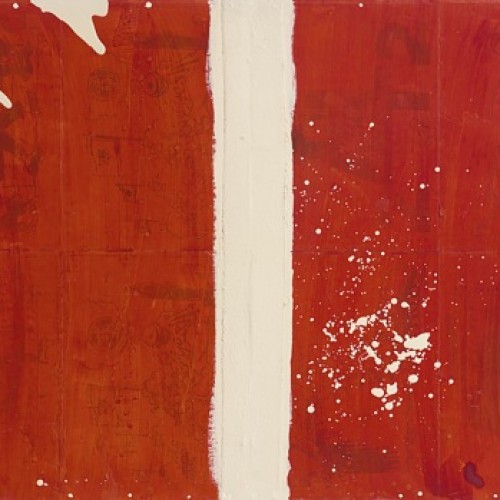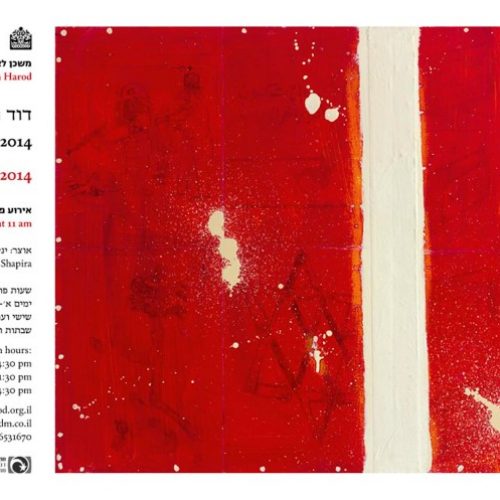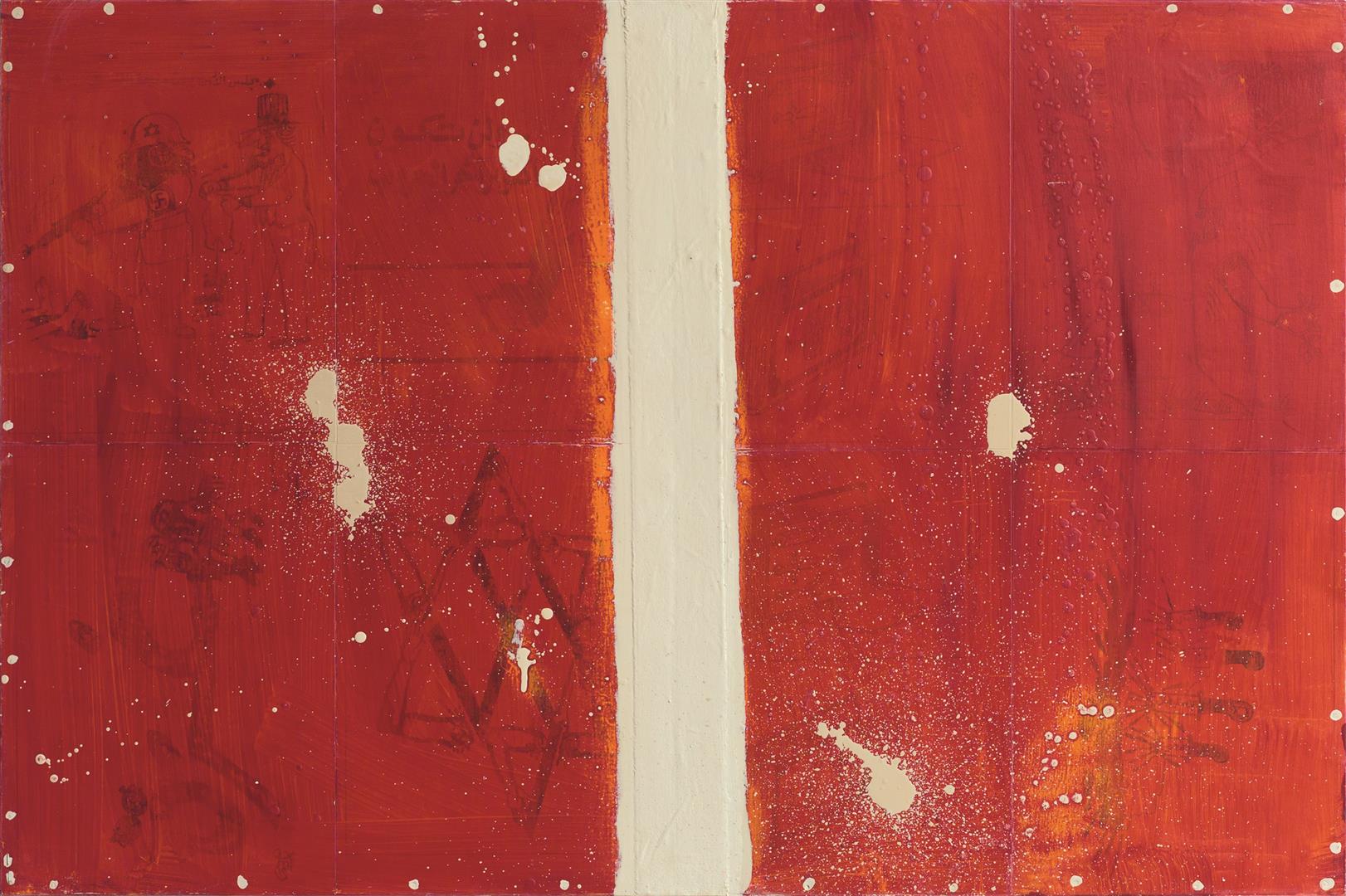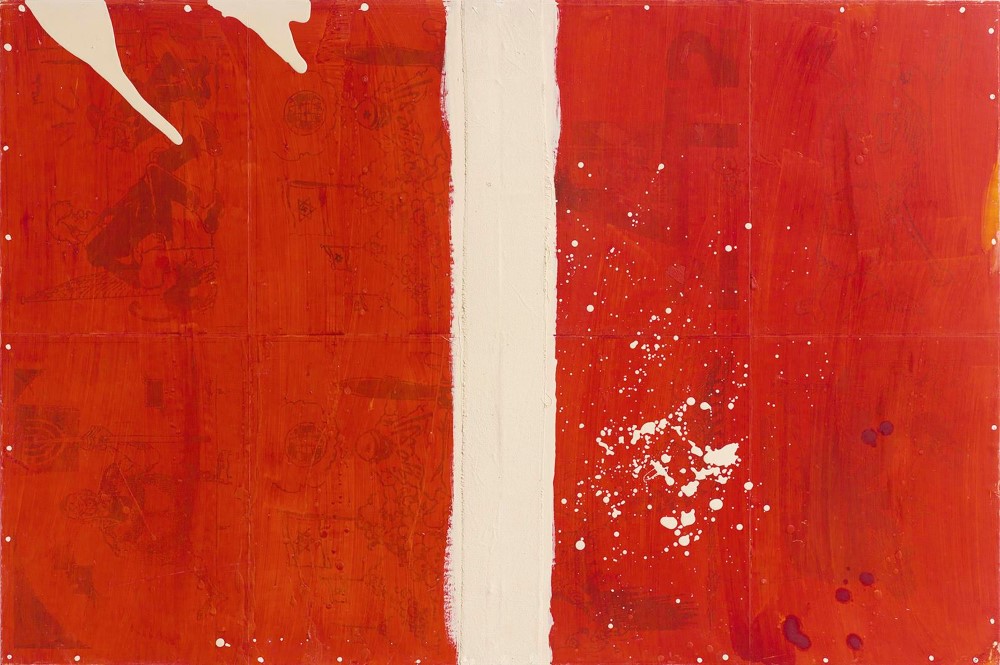
The exhibition “David Wakstein Painting, 1975–2014” surveys two aspects of Wakstein’s oeuvre, featuring both his introvert studio practice and his activity in the public social and artistic sphere. Hence the multivalence of the word “painting” in the title of the exhibition and accompanying catalogue. For to Wakstein’s mind, an artist acts on behalf and in service of society, in educational and social capacities, and therefore painting embodies actions that exceed the canvas frame.
The exhibition starts with works from Wakstein’s days as a Bezalel student. Made in the spirit of conceptual art, they suggest an early attempt to harness artistic expression to channeling affective and mental distress. One may view in similar light the great majority of his consequent artistic production, which engages in themes such as orphanhood, family and war. These works manifest a belief in art’s power as a means of establishing social identity, while probing the question of its function in a place fraught with conflict.
Since the early 1990s, Wakstein’s artistic hand has developed as an offshoot of his other pursuits, such as his extensive activities with the student groups he calls Painting Teams (P.T.). His students’ creative products have turned into the underlying layers of many of Wakstein’s own works, like a collective unconscious that touches the soft underbelly of Israeli society. This unique artistic form informs various series of works on view in the exhibition, whose “unfinished” or tarnished look associates them with a trend dubbed “bad” painting. These works, manifesting Wakstein’s engagement with a difficult social reality and uncertain political horizon, are as topical and relevant as ever. This perspective also propels his work toward large-scale projects, such as the mosaic Miss Liberty and the wall of Names featured in the exhibition, which are concerned with the creative process no less than with its final outcome.


